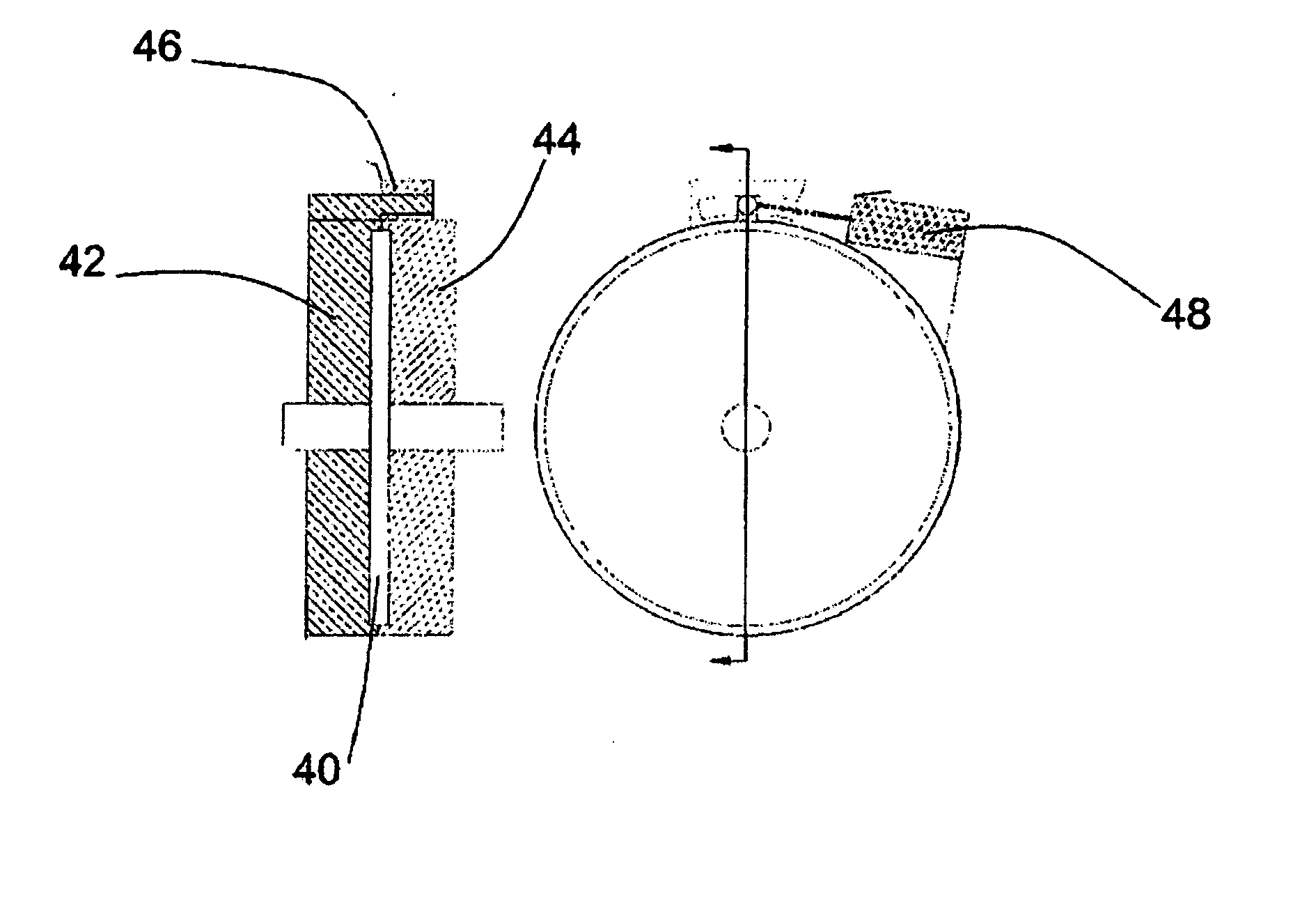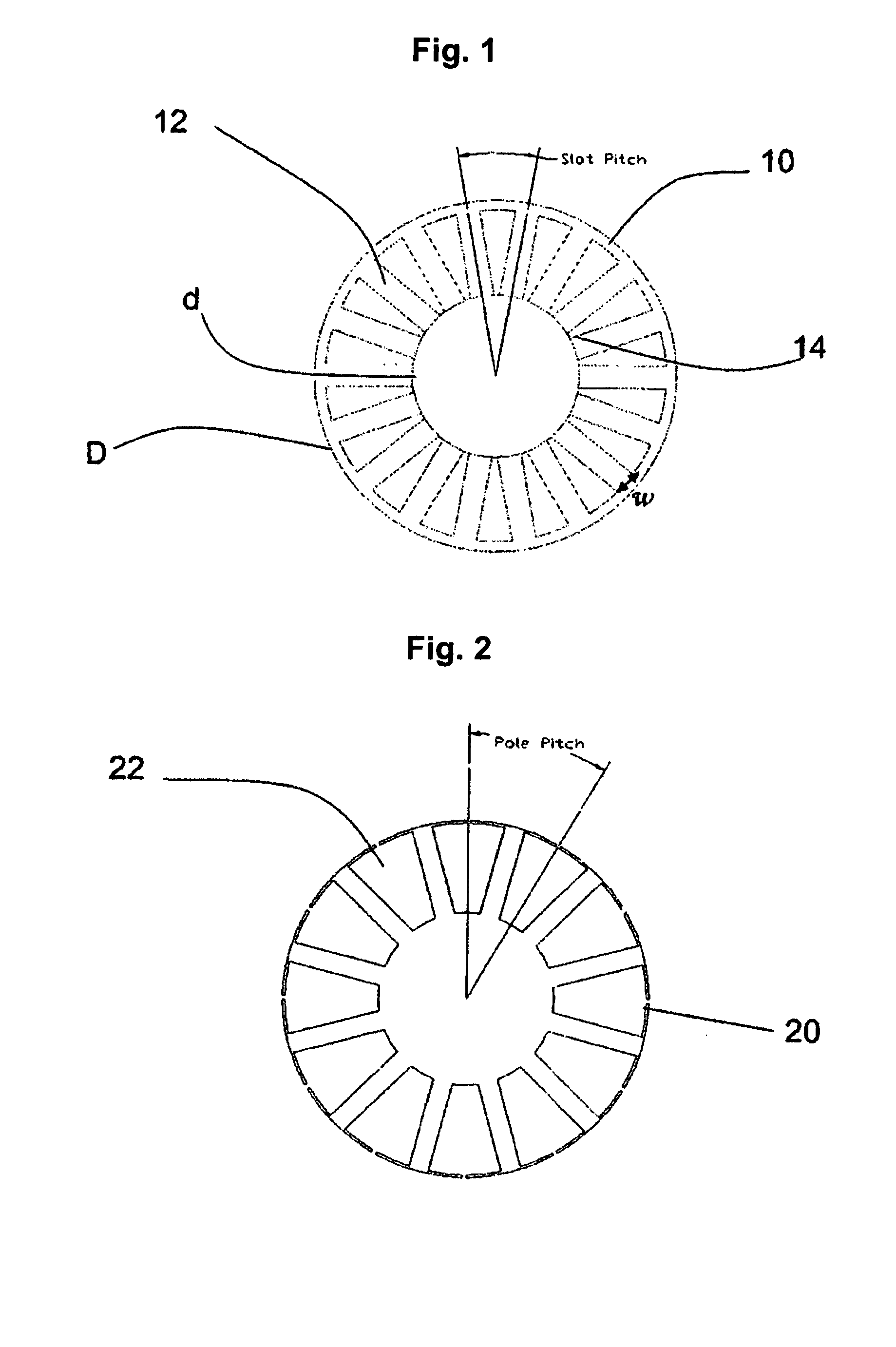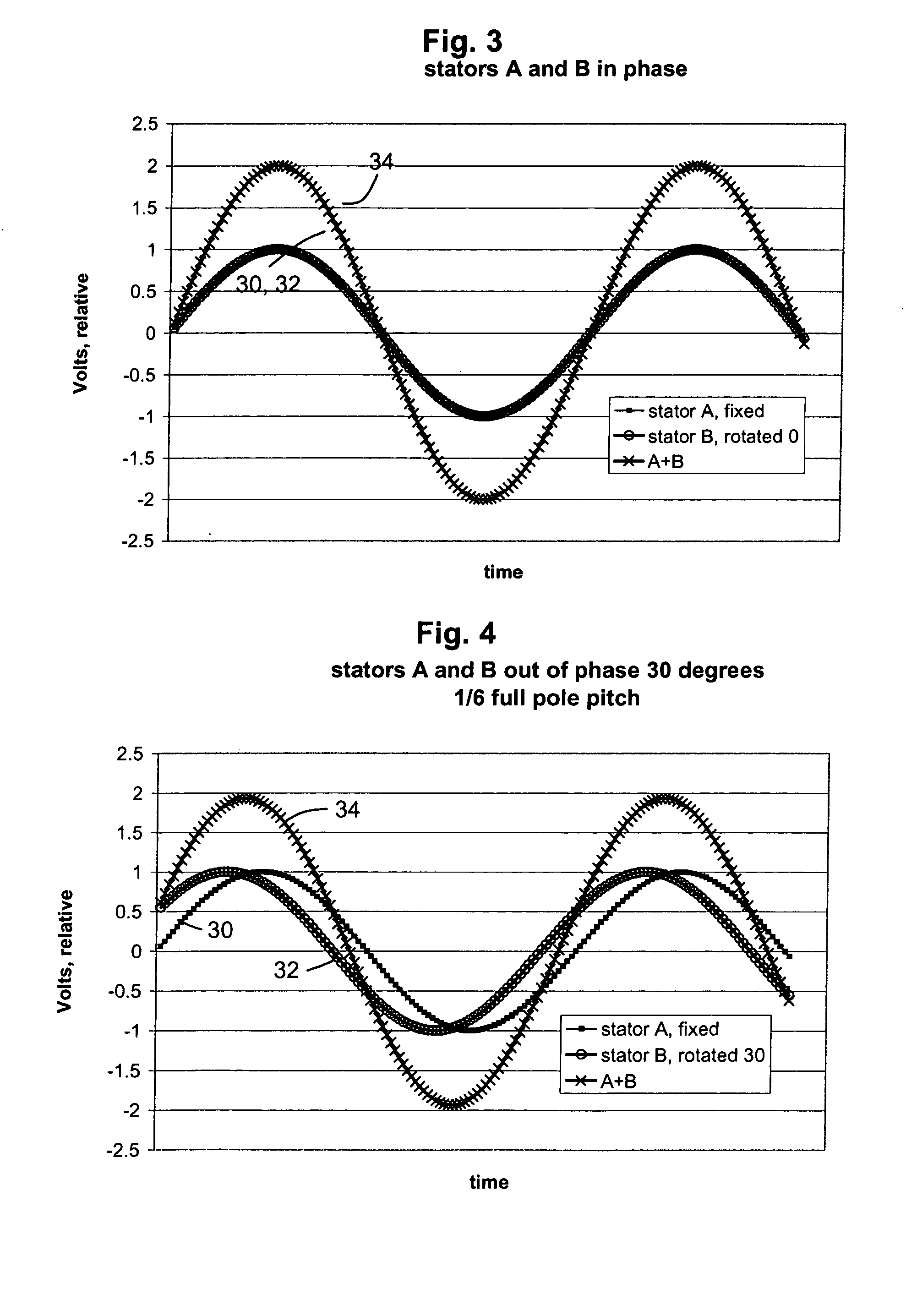Selective alignment of stators in axial airgap electric devices comprising low-loss materials
a technology of electric devices and axial air gap, which is applied in the direction of magnetic circuit rotating parts, magnetic circuit shape/form/construction, windings, etc., can solve the problems of difficult or impossible to directly substitute ordinary steels in conventionally designed motors, unable to meet the requirements of axial or radial air gap, and difficult to achieve the effect of wide range of possible operating speeds, high operating efficiency and significant flexibility in design
- Summary
- Abstract
- Description
- Claims
- Application Information
AI Technical Summary
Benefits of technology
Problems solved by technology
Method used
Image
Examples
examples
[0172] Variable Speed Generator
[0173] In a generator, torque is always in a constant direction, i.e., resisting the rotation of the prime mover. The prime mover is any device, e.g., a gasoline or diesel engine, a turbine, a water wheel, or similar source of rotational mechanical energy, which drives the generator. At low speed the prime mover typically has low power, and the ability of the generator to deliver electrical power is therefore low. Prime movers ordinarily produce greater power at higher speeds, and thus the generator should be designed to produce greater power at higher speeds.
[0174] Ideally the generator output should match the prime mover output at all speeds. Improvements in power semiconductors permit power electronic converters to receive large amounts of power at a range of frequencies and efficiently and cost effectively deliver output power, either at DC or as a synthesized waveform at another frequency. Consequently, designers can optimized their designs to a...
PUM
 Login to View More
Login to View More Abstract
Description
Claims
Application Information
 Login to View More
Login to View More - R&D
- Intellectual Property
- Life Sciences
- Materials
- Tech Scout
- Unparalleled Data Quality
- Higher Quality Content
- 60% Fewer Hallucinations
Browse by: Latest US Patents, China's latest patents, Technical Efficacy Thesaurus, Application Domain, Technology Topic, Popular Technical Reports.
© 2025 PatSnap. All rights reserved.Legal|Privacy policy|Modern Slavery Act Transparency Statement|Sitemap|About US| Contact US: help@patsnap.com



